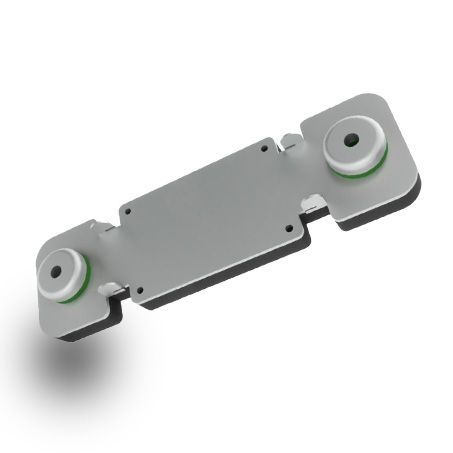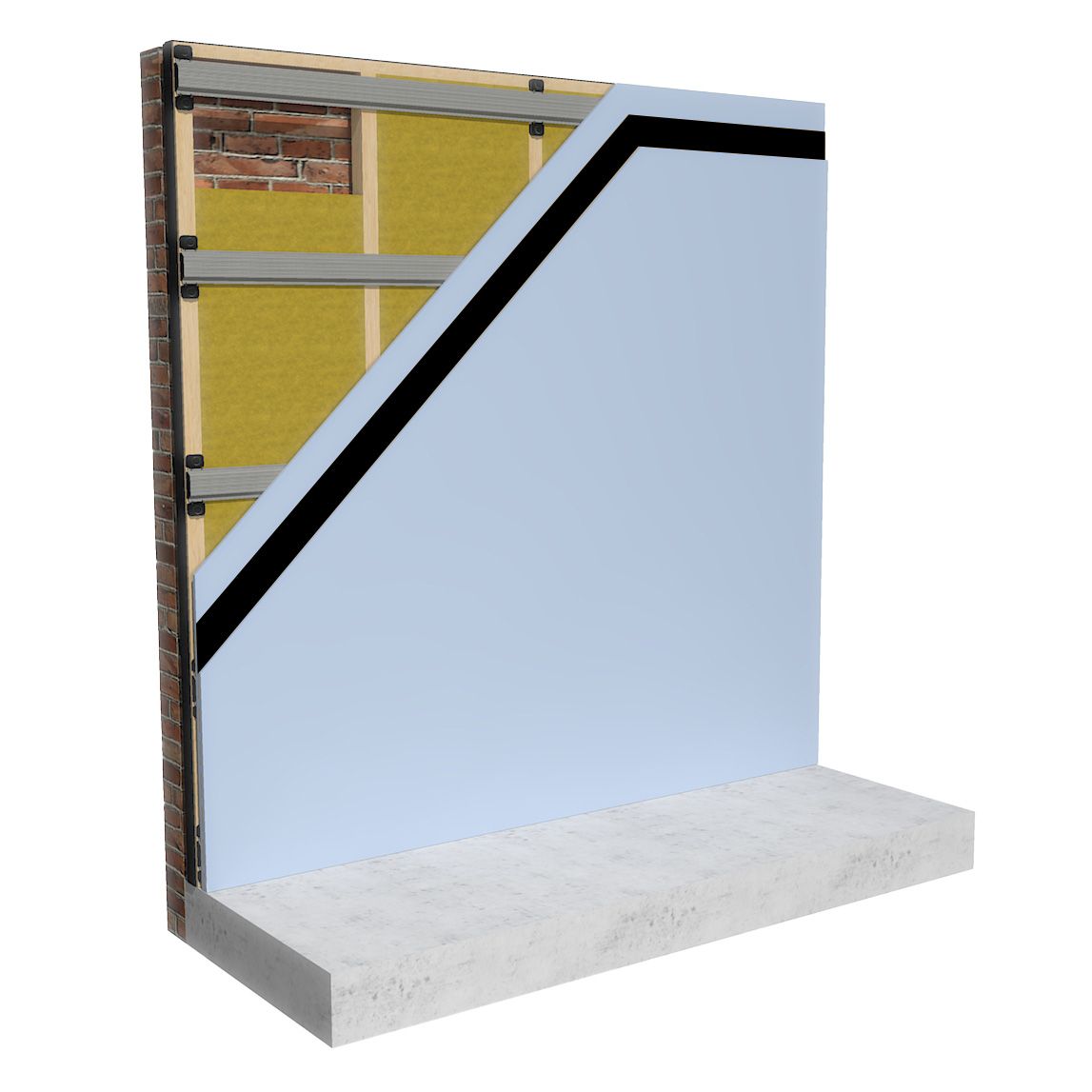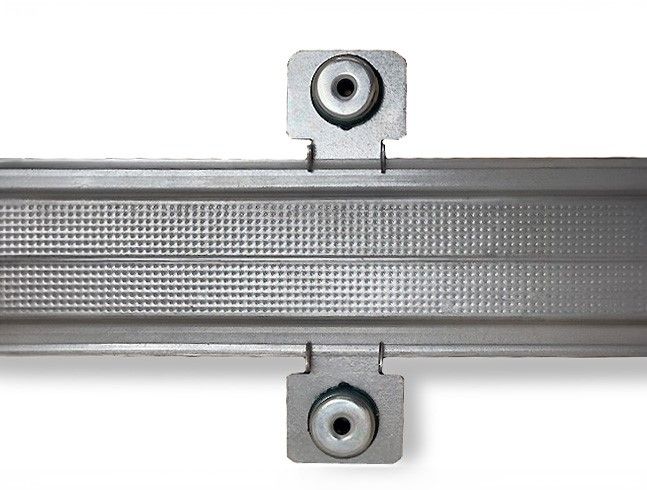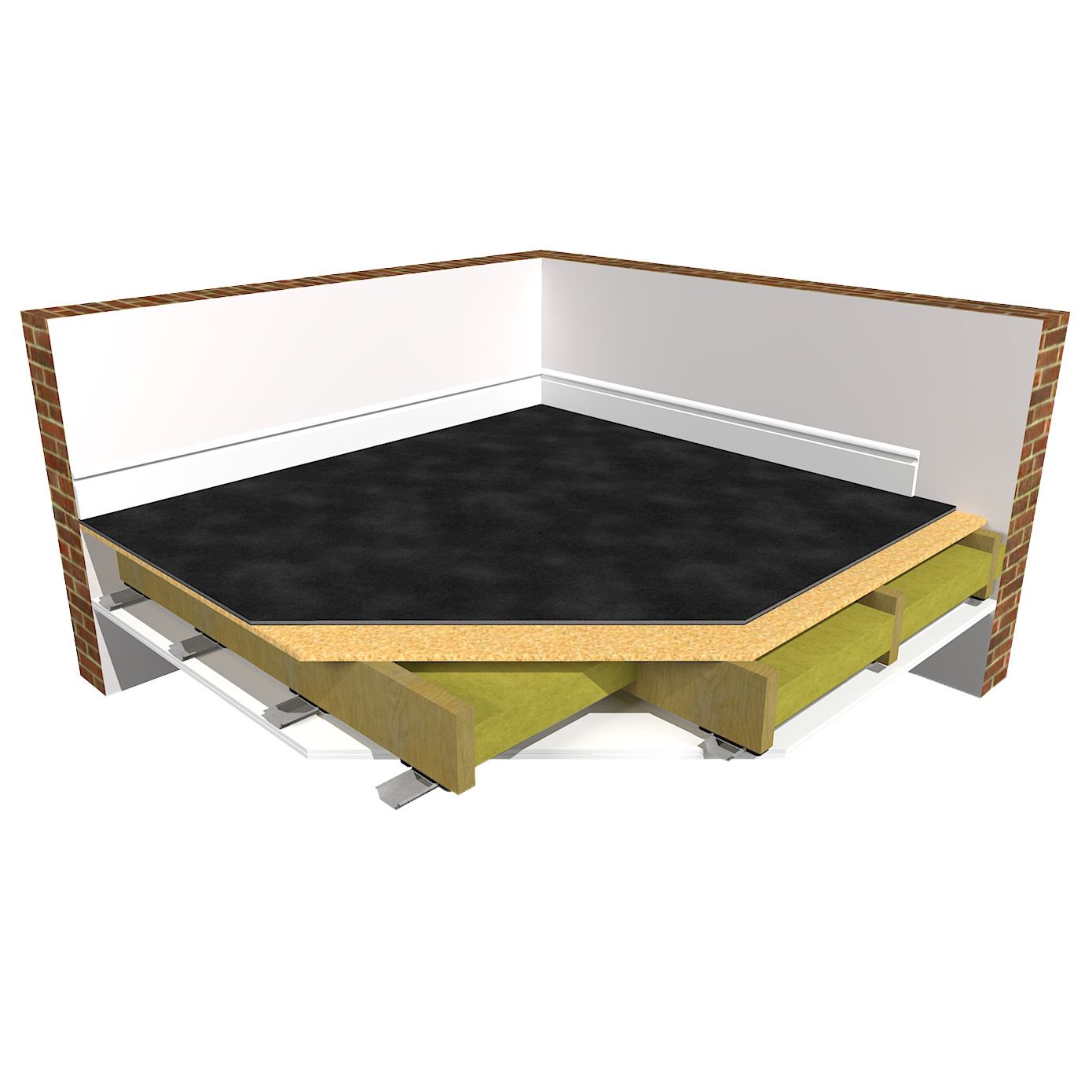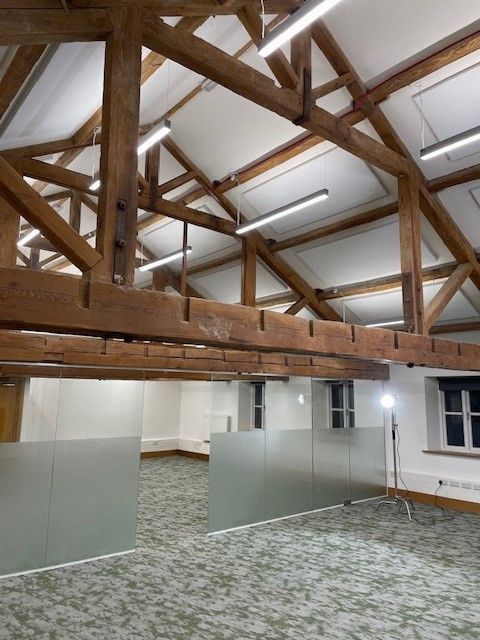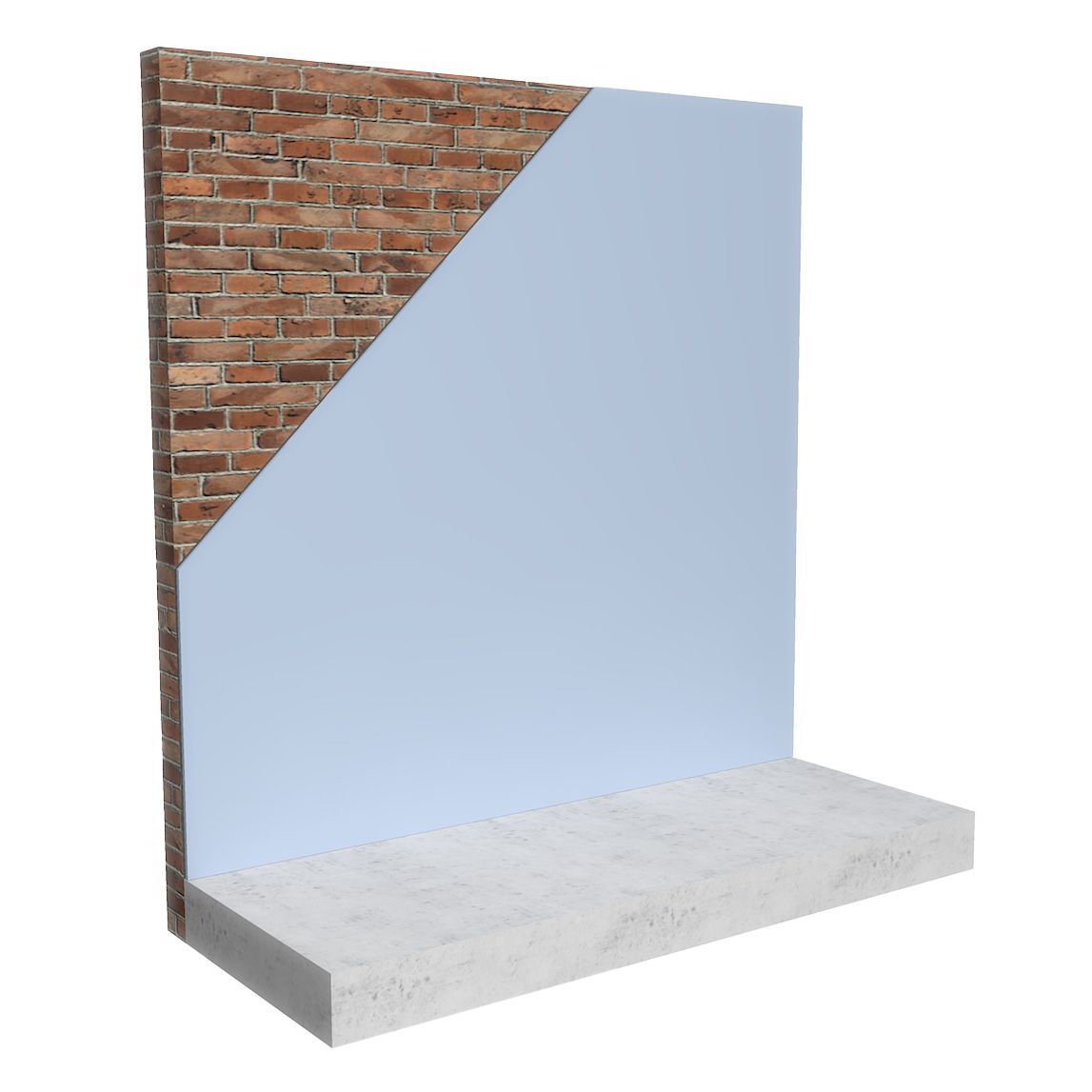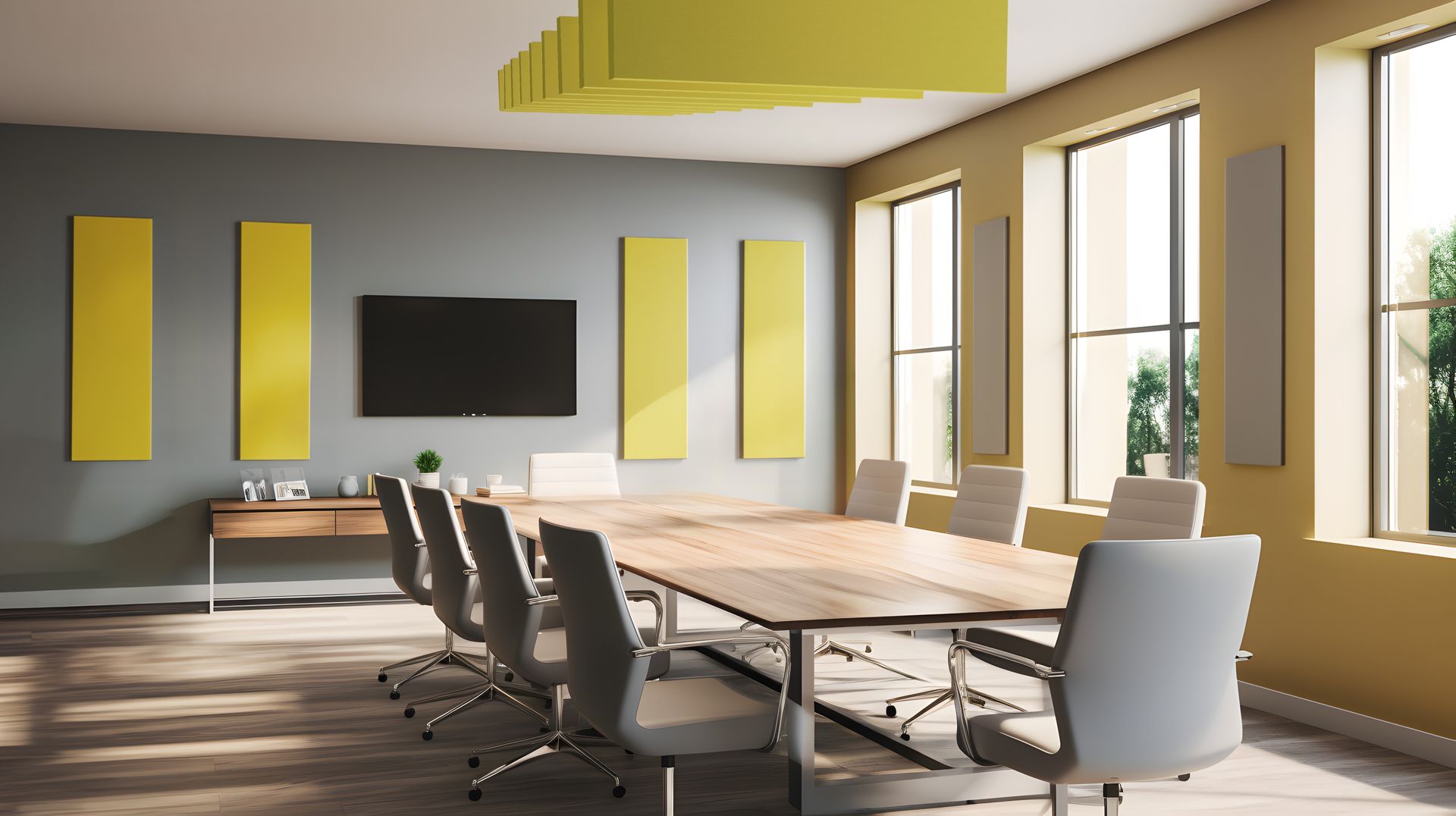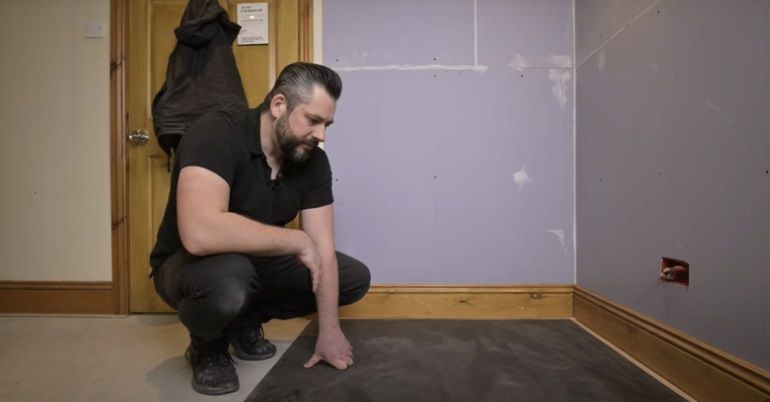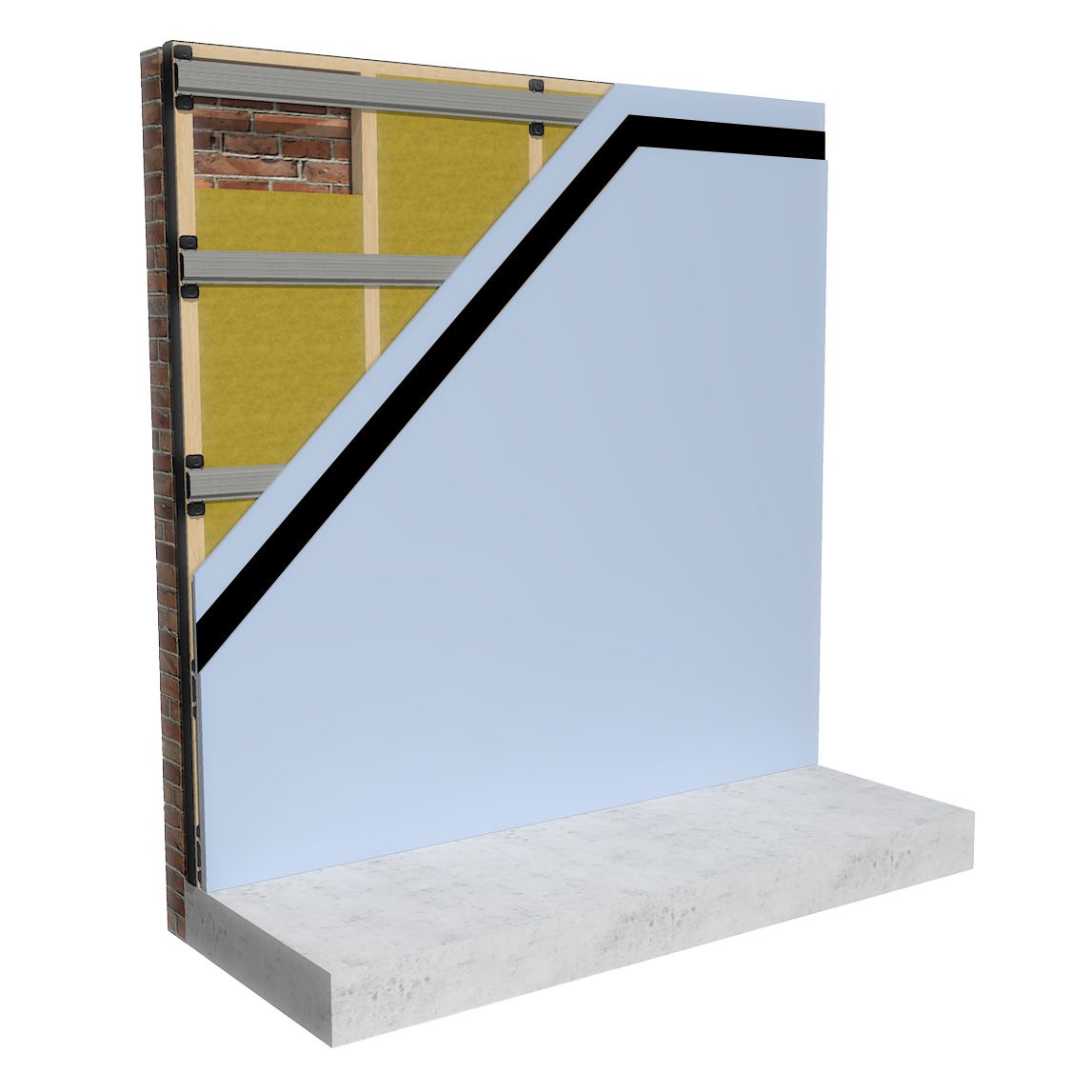
Which soundproofing clip should I choose?
When choosing the right soundproofing clip, consider the following:
1. Type of Noise
- Airborne Noise (e.g., voices, TV noise): If you're mainly concerned with blocking airborne noise, a high-quality clip will work well.
- Impact Noise (e.g., footsteps, vibrations, low bass noises e.g. music or snoring): For dealing with impact noise, you might want to choose a clip with superior decoupling properties, like the ReductoClip which has a dual rubber design compared to the single rubber designs of other clips. The two different types of rubber used in two separate areas of the clip makes the ReductoClip better able to absorb different frequencies of sound.
2. Application Area
- Residential or domestic homes: A high quality clip will work well. Often there are space constraints within homes, so choose a clip which takes up the least amount of space like the ReductoClip which is the not only the highest performing, but also the thinnest on the market
- Home Theaters or Recording Studios: For spaces where superior soundproofing is crucial, again the ReductoClip offers an exceptional performance in reducing unwanted noise in high performance situations.
3. Budget
- Many clip and bar systems are a similar price point (give or take £80-£100). It is worth paying slightly more for a market leading clip and bar solution which has performance test data and is a tried and tested soundproofing solution.
4. Ease of Installation
- The majority of soundproofing clip systems can be fitted by a competent DIYer. Usually it is recommended that two people do the installation once the clips and bars are fitted as soundproofing materials are extremely heavy. Another alternative would be to use a local tradesperson. Most clip and bar systems come with a comprehensive installation guide and often with videos detailing step-by-step instructions
5. Space Considerations
- The ReductoClip Direct to Wall soundproofing clip system is by far the slimmest on the market and the full system only takes up 60mm.
Recommended Clip
If you are unsure of which soundproofing clip to use, then the best advice would be to speak to an expert. With soundproofing, it's advisable to do it once and do it right.
What are soundproof isolation clips?
Soundproof isolation clips are used in domestic homes to reduce unwanted noise from noisy neighbours. Soundproof isolation clips are also used to soundproof the walls and ceilings of recording studios, cinema rooms and home theatres. Isolation clips are used as part of a full soundproofing system to dramatically reduce sound transmission through walls and ceilings. They help to decouple structures, e.g. solid brick walls in terrace houses separating your house from your neighbours. Soundproof clips help to reduce the transfer of sound vibrations from one part of a structure to another.
How do soundproofing clips work?
- Decoupling: The primary function of isolation clips is to decouple the offending wall from the soundproofing layers, such as Acoustic plasterboard and FlexiSound. This separation reduces the direct path that sound vibrations can travel through, significantly lowering noise transmission.
- Vibration Dampening: The clips often include a rubber component that helps absorb and dampen vibrations. This material acts as a cushion, reducing the energy of sound waves and preventing them from travelling through the structure.
- Installation: The clips are attached in two ways. 1. to an independent stud frame built 10mm away from the offending wall (for optimal soundproofing results) or 2. attached directly to the wall or ceiling. Furring channels are then clipped into the isolation clips and the soundproofing layers are then attached to these channels. The result is a soundproof wall or ceiling that is isolated from the original structure.
Key benefits of soundproof isolation clips
Improved Sound Isolation: By decoupling surfaces, soundproof isolation clips significantly reduce the transmission of sound energy and vibration. Making them ideal for environments where sound control is critical, such as domestic homes with noisy neighbours, recording studios and home theaters.
Enhanced Privacy: Soundproofing clips are effective in residential settings where privacy is important, such as between flats and apartments or between rooms within a home.
Compliance with Building Regulations: Many new homes and those undergoing conversions require a certain level of sound isolation. In England and Wales this is regulated using Part E1 Building Regulations. When used as part of a full system, Isolation clips help buildings meet these standards.
Best sound isolation clip
The most popular soundproof isolation clip is the ReductoClip. The ReductoClip is the winner of the SME UK Enterprise Awards - Soundproofing Solution of the Year 2024.
Which is the best soundproofing clip: comparisons
What makes the ReductoClip the best isolation clip for soundproofing? The figures below are based on the soundproof clips attached directly to a solid brick wall. Performance for clip and bar systems can be further improved by attaching them to an independent stud frame built a minimum of 10mm away from the offending wall.
List of Services
-
ReductoClipReductoClip - Learn More List Item 1
- Excellent performance v's space loss
- Improvement on a solid brick wall 19dB (DnT,w+Ctr)
- Drect to Wall System - total buildup only 60mm thick
- Thickness of the clip and bar 25mm (the slimmest on the market)
- Dual isolation points. Rubber isolaton AND closed cell foam means the clip is higher performing and better able to absorb different frequencies of sound. The clip also perfoms better for lower frequencies than other clips
- Wider spacing with a wider furring chanel (50mm) means a larger surface area to attach acoustic plasterboard. A central groove makes finding the midpoint much easier for a quicker and seamless installation
- More substantial, robust and larger clip with two fixing points. This means fewer clips are needed and a larger weight capacity per clip
-
MuteClipItem Link List Item 2
- Good perfromance v's spaceloss
- Improvement on a solid brick wall 17dB (DnT,w+Ctr)
- Direct to Wall System - total buildup 74mm
- Thickness of the clip and bar 40mm (60% thicker than the ReductoClip and bar system)
- Single rubber - restricted to absorbing fewer sound frequencies
- A very thin furring chanel (32mm) means a small surface area to attach plasterboard. No central groove makes finding the midpoint harder when butting up acoustic plasterboard
- Smaller clip means more clips are needed per area
-
GenieClipItem Link List Item 3
- Improvement on a solid brick wall - no improvement figure available
- Direct to Wall System - total buildup 75.22mm
- Thickness of the clip and bar 41.22mm (65% thicker than the ReductoClip and bar system)
- Single rubber - restricted to absorbing fewer sound frequencies
- A very thin furring chanel (32mm) means a small surface area to attach acoustic plasterboard. No central groove makes finding the midpoint harder when butting up acoustic plasterboard
- Smaller clip means more clips are needed per area
When comparing the ReductoClip, MuteClip, and GenieClip, the ReductoClip stands out as the top choice for effective soundproofing with minimal space loss. It offers the highest noise reduction (19dB) perfromance and the slimmest profile, making it ideal for projects where space is at a premium. Its dual isolation points and wider furring channel provide superior soundproofing and easier installation. The MuteClip and GenieClip, while still effective, offer slightly lower performance and take up much more space. They also have limitations in lower sound frequency performance. The ReductoClip provides the best combination of performance, space efficiency, and installation convenience.
Soundproof isolation clips: comparisons
Soundproof isolation clips: installation tips
Use with the correct channels: Isolation clips are used alongside furring channels or furring bars which clip into the isolation clips. Make sure to use the correct channels for the clips being used. The soundproofing layers of high mass materials such as Acoustic Plasterboard and FlexiSound are then attached to the furring bars allowing the soundproofing clips to isolate the soundproof materials from the offending wall or ceiling.
Clip spacings: Follow the manufacturers spacings to ensure the correct installation. There are different spacings for different clip and bar systems.
Optimal performance:
If space allows, build an independent stud frame 10mm away from the offending wall and attach the soundproofing clips to this. This further decouples the soundproofing making it even harder for unwanted noise to travel from one house or room to the other.
Do soundproofing clips work?
Yes, soundproofing isolation clips are extremely effective at reducing noise transmission travelling between walls and ceilings. They work by decoupling and creating a break in the sound path.
Soundproofing clips are a proven and effective method for reducing noise transmission in various settings, from residential homes to professional studios and work best when installed correctly and as part of a soundproofing system which utilises high mass materials such as Acoustic Plasterboard and FlexiSound.
Choosing the best soundproof isolation clip - overview
When choosing the right soundproofing clip, consider your specific needs, such as the level of noise reduction required, the type of structure you’re working with, and any space constraints. If maximum sound isolation is your top priority, opt for premium clips that offer high decoupling and enhanced noise reduction.
Author
Phil Lyons heads up the technical team within The Soundproofing Store, bringing with him a wealth of expertise in the field of soundproofing and acoustics. With considerable experience in addressing a variety of noise-related challenges, Phil plays a crucial role in assisting customers in finding effective solutions to all types of unwanted noise problems.
Phil also serves as the head of the studio department, specialising in soundproofing music rooms and band practice spaces. His proficiency extends to regularly collaborating with builders and specifiers on projects that require compliance with Part E Building Regulations. Phil regularly demonstrates his versatility and extensive knowledge of soundproofing across all situations.
An authoritative voice within Soundproofing, Phil also fronts The Soundproofing Store YouTube channel, sharing his extensive knowledge and expertise with people all over the world.
"We don’t expect you to become an overnight expert in soundproofing, that’s what we’re here for."

We let our customers do the talking
Useful Links:
Contact Info:
Opening Times:
Mon - Fri: 9:00am - 5:00pm
Sat - Sun: Closed
Join Our Newsletter
Join Our Newsletter
Thank you for contacting us.
We will get back to you as soon as possible
www.soundproofingstore.co.uk
01423 206208
sales@soundproofingstore.co.uk
Please try again later

